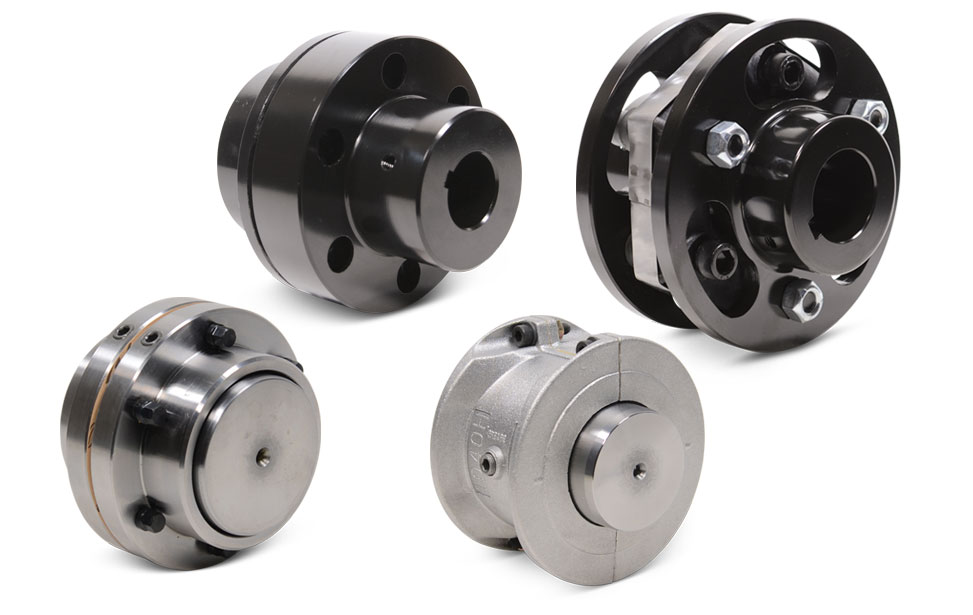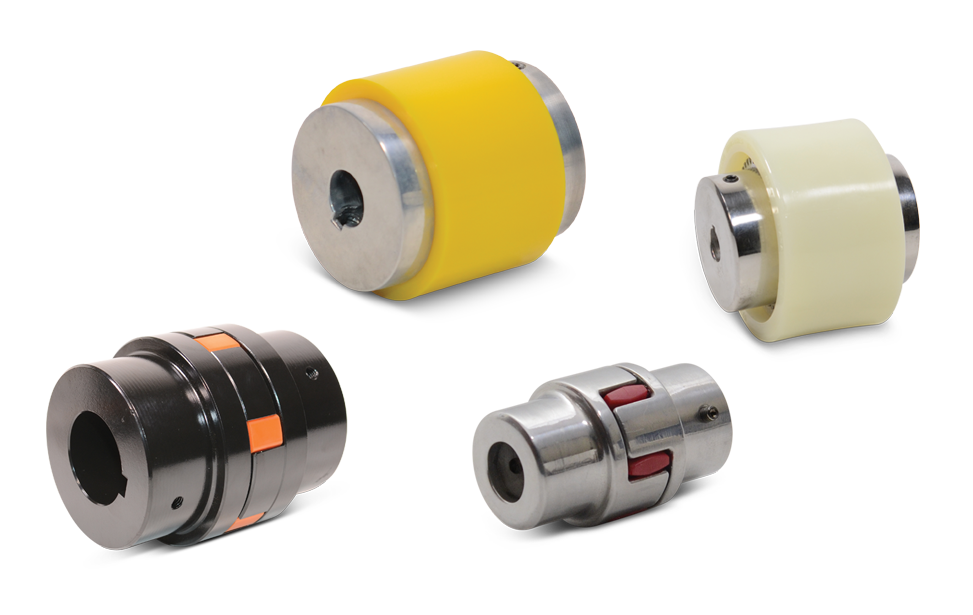Product Description
GLT-68×74 GLT Double Diaphragm Flexible Shaft Coupling For Shaft Encoder Step Motor
Description of GLT-68×74 GLT Double Diaphragm Flexible Shaft Coupling For Shaft Encoder Step Motor
>High torque rigidity, can accurately control the rotation of the shaft, can carry out high-precision control
>Designed for servo and stepping motor
>No gap between the shaft and sleeve connection, general for positive and negative rotation
>Low inertia, suitable for high speed operation
>The diaphragm is made of spring steel with excellent fatigue resistance
Catalogue of GLT-68×74 GLT Double Diaphragm Flexible Shaft Coupling For Shaft Encoder Step Motor
|
model parameter |
common bore diameter d1,d2 |
ΦD |
ΦN |
L |
LF |
d3 |
LP |
S |
tightening screw torque |
|
GLT-34×37.5 |
5,6,6.35,7,8,9,9.525,10,11,12, |
34 |
21.6 |
37.5 |
12.15 |
Φ16 |
6.8 |
3.2 |
1.5 |
|
GLT-39×48 |
6,8,9,9.525,10,11,12,12.7,14,15 |
39 |
25 |
48 |
15.15 |
Φ19 |
9.3 |
4.5 |
2.5 |
|
GLT-44×48 |
6,8,9,9.525,10,11,12,12.7,14,15,16,17,18 |
44 |
29.6 |
48 |
15.15 |
Φ22.5 |
9.3 |
4.2 |
2.5 |
|
GLT-56×61 |
10,12,12.7,14,15,16,17,18,19,20,22,24 |
56 |
38 |
61 |
19.9 |
Φ32.5 |
10.8 |
5.2 |
7 |
|
GLT-68×74 |
14,15,16,17,18,19,20,22,24,25,28,30 |
68 |
46 |
74 |
24 |
Φ38.3 |
14 |
6 |
12 |
|
GLT-82×98 |
17,18,19,20,22,24,25,28,30,32,35,38 |
82 |
56 |
98 |
30.15 |
Φ45 |
22.3 |
7.7 |
20 |
|
model parameter |
Rated torque(N.m) |
allowable eccentricity (mm) |
allowable deflection angle (°) |
allowable axial deviation (mm) |
maximum speed (rpm) |
static torsional stiffness (N.M/rad) |
weight (g) |
|
GLT-34×37.5 |
2 |
0.12 |
1.5 |
±0.18 |
10000 |
2200 |
49 |
|
GLT-39×48 |
4.5 |
0.15 |
1.5 |
±0.23 |
10000 |
4500 |
85 |
|
GLT-44×48 |
6.75 |
0.17 |
1.5 |
±0.27 |
10000 |
5500 |
107 |
|
GLT-56×61 |
20 |
0.17 |
1.5 |
±0.36 |
10000 |
11000 |
196 |
|
GLT-68×74 |
50 |
0.18 |
1.5 |
±0.4 |
9000 |
23000 |
375 |
|
GLT-82×98 |
90 |
0.18 |
1.5 |
±0.5 |
8000 |
38000 |
645 |
/* January 22, 2571 19:08:37 */!function(){function s(e,r){var a,o={};try{e&&e.split(“,”).forEach(function(e,t){e&&(a=e.match(/(.*?):(.*)$/))&&1

Exploring the Use of Elastomeric Materials in Flexible Motor Couplings
Elastomeric materials play a crucial role in the design and function of flexible motor couplings. These materials offer unique properties that make them well-suited for power transmission applications. Here’s an exploration of their use in flexible motor couplings:
1. Flexibility and Damping:
Elastomeric materials, such as rubber or urethane, are highly flexible, allowing them to absorb and dampen vibrations and shocks generated during motor operation. This damping property helps reduce resonance and noise, improving the overall performance of the power transmission system.
2. Misalignment Compensation:
Flexible motor couplings with elastomeric inserts can accommodate both angular and parallel misalignments between the motor and driven equipment shafts. The elastomeric material provides some radial compliance, allowing for smooth torque transmission even when the shafts are slightly misaligned.
3. Shock Absorption:
In applications where the motor or driven equipment is subjected to sudden shocks or impacts, elastomeric materials act as shock absorbers. They absorb and dissipate the impact energy, protecting the coupling and connected components from damage.
4. Low Inertia:
Elastomeric couplings typically have low inertia due to the lightweight nature of the elastomeric material. This low inertia reduces the rotational resistance and allows for rapid acceleration and deceleration of the connected equipment.
5. Corrosion Resistance:
Elastomeric materials are often resistant to corrosion, making them suitable for use in various industrial environments where exposure to moisture or chemicals may occur.
6. Electrical Isolation:
Elastomeric couplings provide electrical isolation between the motor and driven equipment shafts. This is advantageous in applications where electrical continuity must be avoided.
7. Easy Installation:
Elastomeric couplings are generally easy to install due to their simple and lightweight construction. They do not require special tools or complex alignment procedures, making them a popular choice in many applications.
8. Maintenance-Free Operation:
Properly designed and maintained elastomeric couplings can offer maintenance-free operation over extended periods. The absence of mechanical wear elements reduces the need for regular maintenance and replacement.
The use of elastomeric materials in flexible motor couplings provides numerous benefits, making these couplings suitable for a wide range of applications. Their ability to compensate for misalignment, dampen vibrations, and withstand shocks makes them particularly advantageous in situations where smooth and reliable power transmission is essential.
“`
Can Motor Couplings Handle Reversing Loads and Shock Loads Effectively?
Yes, motor couplings are designed to handle both reversing loads and shock loads effectively, making them suitable for a wide range of industrial applications. Here’s how motor couplings can handle these types of loads:
Reversing Loads:
Motor couplings are capable of transmitting torque in both forward and reverse directions. When the driven equipment experiences changes in direction, the motor coupling efficiently transfers torque from the motor to the driven equipment without any loss in performance. This capability is crucial in applications that require frequent changes in rotational direction, such as reversing drives in industrial machinery.
Shock Loads:
Motor couplings, especially those with elastomeric elements, have excellent shock-absorbing properties. When subjected to sudden shocks or impacts, such as during machine start-ups or sudden stops, the elastomeric material in the coupling helps dampen and absorb the impact energy. This protects the motor, driven equipment, and other components in the power transmission system from damage or excessive stress.
The ability of motor couplings to handle reversing loads and shock loads effectively is a result of their flexible and durable construction. Flexible couplings, in particular, can accommodate misalignments and absorb vibrations, further contributing to their ability to handle dynamic loads. However, it’s essential to consider the specific application’s requirements and select the appropriate coupling type and size that matches the expected reversing and shock load characteristics.
Proper installation, alignment, and regular maintenance of motor couplings are also critical factors in ensuring their optimal performance under reversing and shock load conditions. Regular inspection and monitoring can help identify any signs of wear or damage and allow for timely maintenance, contributing to the long-term reliability and efficiency of the power transmission system.
“`
Can a Damaged Motor Coupling Lead to Motor or Equipment Failure?
Yes, a damaged motor coupling can lead to motor or equipment failure if not addressed promptly. Motor couplings play a critical role in connecting the motor to the driven equipment and transmitting torque between them. When a coupling is damaged, several potential issues can arise:
- Reduced Torque Transmission: Cracks, wear, or deformation in the coupling can result in reduced torque transmission from the motor to the driven equipment. This may lead to inefficient operation and underperformance of the machinery.
- Mechanical Vibrations: Damaged couplings can introduce vibrations into the system, leading to increased wear and fatigue on connected components, such as bearings and shafts. Excessive vibrations can cause premature failure of these parts.
- Misalignment and Stress: If the coupling loses its ability to compensate for misalignment, it can subject the motor and driven equipment to increased stress and loading. This can result in premature wear and failure of bearings, shafts, and other components.
- Overload on the Motor: In certain coupling designs, damage may result in a loss of overload protection. Without the safety mechanism, the motor may experience excessive loads, leading to overheating and possible motor failure.
- Increased Downtime: A damaged coupling can cause unexpected breakdowns and unplanned downtime for repairs, affecting productivity and overall operational efficiency.
- Safety Risks: In extreme cases, a severely damaged coupling may disintegrate during operation, posing safety risks to personnel and surrounding equipment.
To avoid motor or equipment failure due to a damaged coupling, regular maintenance and inspection are crucial. Visual inspections, vibration analysis, and monitoring of coupling performance can help identify signs of damage early on. If any issues are detected, it is essential to replace or repair the damaged coupling promptly to prevent further damage and ensure the reliable operation of the machinery.
Proper selection of high-quality couplings, appropriate for the specific application and operating conditions, can also reduce the likelihood of coupling failure and its potential impact on the motor and equipment.
“`

editor by CX 2024-04-30
by
Tags:
Leave a Reply